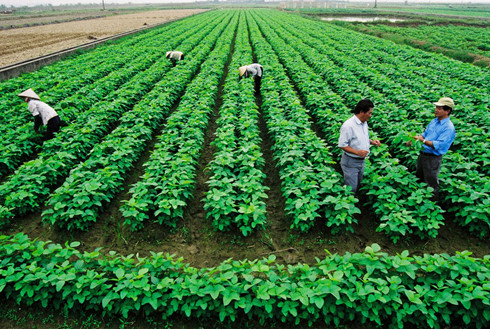Mining, agriculture slow economic growth
VOV.VN - Weakness in the mining and agriculture segments of the economy dragged on third quarter growth and will likely result in Vietnam missing the year’s 6.7% targeted GDP growth rate, say government economists.
 |
For the nine months leading up to October of 2016, the Southeast Asian nation's economy expanded at a modest 5.93% rate—far short of the forecast, the General Statistics Office (GSO) said in its report.
In its report the GSO principally blamed the mining segment for the slowdown, which dipped a full 6.8% on-year in the third quarter after freefalling 5.3% in the second quarter of 2016 for a combined two quarter contraction of 12.1%.
Adverse weather conditions, including drought and salinization in the coffee belt and Mekong Delta also contributed to putting the skids on economic growth in both the foreign and domestic sectors.
Growth of the GDP in 2016 will definitely be lower than targeted but how much lower will depend primarily on how the mining segment performs in the fourth quarter, said Ha Quang Tuyen, head of the GSO National Accounts Department.
Mr Tuyen noted that overall the Vietnam economy grew at an annual 6.4% on-year rate in the third quarter, well below the 6.87% growth rate for last year’s third quarter and now the GSO is pinning their hopes on a better fourth quarter.
Mr Tuyen told reporters the GSO is hoping to see growth in the fourth quarter of the year at least equal to that of the fourth quarter of 2015 as weather patterns return to more normal.
Looking at longer term prospects, said Mr Tuyen, higher pledged foreign direct investment over the last decade is somewhat indicative of investors’ belief that Vietnam has the potential to become a robust economy.
Yet serious structural challenges to future growth remain. For instance, the debt burden of the government has been growing unsustainable over the past five years, he noted.
It is now dangerously close to the National Assembly’s debt ceiling of 65% of GDP.
Public debt, he noted, has been used much too often to finance the chronic fiscal deficit stemming from a variety of factors including the under-performing state-owned enterprises.
Ongoing inefficiencies in the public sector will not only weigh on the government’s coffers when the debt repayments become due, but they are also interfering with investment aimed at boosting worker productivity growth.
Most notably, said Mr Tuyen, higher productivity growth is essential to sustain the high GDP growth rates the government desires and without such improvements—long-term high GDP growth is simply an elusive dream.
Meanwhile, the Asian Development Bank has also lowered its annual GDP growth forecast for Vietnam to 6%, from the 6.7% it had projected earlier. Previously, the World Bank in July trimmed its GDP growth forecast for 2016 to 6% as well.

